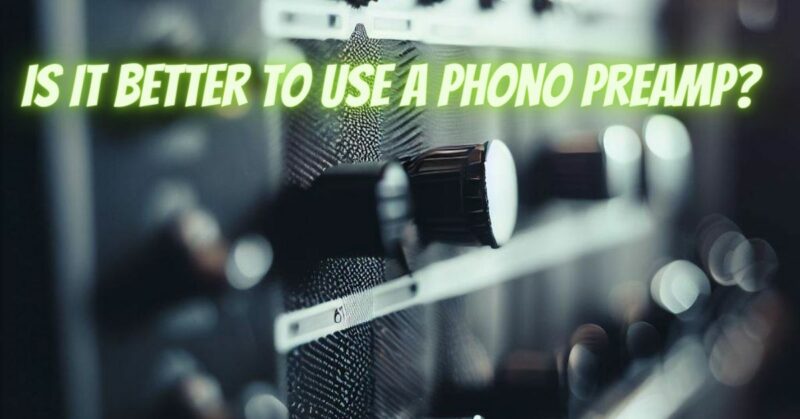Vinyl records have made a remarkable resurgence in the world of audio enthusiasts, captivating music lovers with their warm and authentic sound. When it comes to vinyl playback, the role of a phono preamp (also known as a phono stage or preamplifier) cannot be overstated. In this guide, we’ll explore the significance of phono preamps, why they are essential for vinyl playback, and whether it’s better to use one.
The Role of a Phono Preamp
A phono preamp is a specialized electronic component that plays a pivotal role in the vinyl playback process. Its primary functions include:
- Signal Amplification: Vinyl records store audio information in the form of grooves, which are physically etched with varying amplitudes and frequencies. These signals are extremely low-level and require amplification to reach a level suitable for amplification by a standard amplifier or receiver. A phono preamp boosts this weak signal.
- Equalization (RIAA Curve): During the recording of vinyl records, a specific equalization curve known as the RIAA curve is applied to optimize the recording and reduce noise. The phono preamp reverses this curve, restoring the audio to its original form.
- Impedance Matching: Phono cartridges have unique impedance characteristics. Phono preamps are designed to match the impedance of the cartridge, ensuring optimal performance and accurate reproduction of sound.
- Noise Reduction: Phono preamps often include features for minimizing unwanted noise, such as hiss and hum, which can occur during vinyl playback.
Why Use a Phono Preamp?
Now, let’s explore why using a phono preamp is essential for vinyl playback:
- Signal Amplification: As mentioned earlier, the signal from a phono cartridge is extremely weak. Without a phono preamp, the signal would be too quiet and lack detail and dynamics when amplified by a standard amplifier.
- Correcting the RIAA Curve: Vinyl records are mastered with the RIAA equalization curve to optimize storage and playback. A phono preamp ensures that the audio signal from the record matches this curve, delivering a faithful reproduction of the music.
- Impedance Matching: Phono cartridges have different impedance characteristics, and using the wrong impedance can result in suboptimal sound quality and potential damage to the cartridge. A phono preamp ensures proper impedance matching.
- Noise Reduction: Phono preamps often incorporate features like grounding and shielding to minimize interference and reduce noise, resulting in cleaner and more enjoyable playback.
Is It Better to Use a Phono Preamp?
In most cases, using a phono preamp is not just better; it’s essential for vinyl playback. Here are some reasons why:
- Sound Quality: A phono preamp ensures that the weak signal from the cartridge is properly amplified and equalized, resulting in the best possible sound quality from your vinyl records.
- Preservation: Using a phono preamp designed to match your cartridge and turntable helps preserve the life of your equipment and records. It minimizes wear on the stylus and records by ensuring accurate tracking and playback.
- Compatibility: Many amplifiers and receivers lack a built-in phono preamp, especially in modern audio systems. Using an external phono preamp allows you to enjoy vinyl playback on a wider range of equipment.
- Customization: Investing in a quality phono preamp allows you to customize your audio setup to match your preferences, whether you seek warmth, clarity, or specific sonic characteristics.
In the world of vinyl playback, a phono preamp is an indispensable component that ensures accurate signal amplification, equalization, and impedance matching. It not only improves the sound quality of your vinyl records but also helps protect your equipment and preserve your cherished vinyl collection. Whether you’re a seasoned audiophile or new to vinyl, using a phono preamp is a crucial step in achieving the best possible vinyl playback experience.

